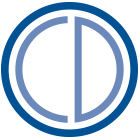There are two subtypes of BDD: Muscle Dysmorphia and BDD by Proxy. Both of these subtypes appear to respond to the same basic treatment strategies as BDD (cognitive behavior therapy or CBT and medications). However, the CBT therapist in particular needs to adjust the treatment so that it has the right focus. Please see below for some of the differences between BDD and BDD subtypes.
Dr. Roberto Olivardia discusses Muscle Dysmorphia (MD), its symptoms, misconceptions, and treatment techniques. Dr. Olivardia also discusses the themes of MD such as low self esteem and trauma.
Muscle Dysmorphia (MD)
Muscle dysmorphia, or MD, is a subtype of body dysmorphic disorder (BDD). MD is associated with a number of thoughts and beliefs about one’s self and others, including:
- Beliefs that one’s body is not sufficiently muscular and large enough
- Over-valuing appearance
- Intrusive negative thoughts about one’s body that leads to distractibility and difficulty focusing attention
- Belief that others negatively evaluate their appearance
There are also a number of behavioral signs of muscle dysmorphia, including:
- Excessively working out/lifting weights (often many hours a day)
- Repeatedly counting calories
- Avoiding eating out at restaurants due to perceived lack of control over food content
- Balancing carbohydrates, fats, proteins, and vitamins to achieve a “perfect” formula
- Eating multiple meals throughout the day at rigidly adhered to schedules
- Excessively checking mirrors, or other reflective surfaces
- Avoidance of mirrors, or other reflective surfaces
- Avoidance of social situations where bodies may be on display (e.g., the beach, or pool)
- Camouflaging one’s bodies by wearing multiple layers of clothing to appear “larger”
- Use of anabolic steroids or other appearance and performance enhancing drugs
Sometimes also referred to as “bigorexia” or “reverse anorexia,” MD may have some overlap with eating disorders but is not an eating disorder exactly. While individuals with MD often follow very precise, time-consuming, and painstakingly picky diets, their eating habits are driven by a concern with improving the mass and leanness of their muscles, as opposed to issues relating to their weight or body fat percentage as seen in individuals with eating disorders. Also, not all individuals with MD have disordered eating.

How muscle dysmorphia is different healthy bodybuilding or fitness:
- Inaccurate body image and perception
- Self-esteem is almost entirely rested on muscle build, while other factors (intelligence, sense of humor, relationships, etc.) are discounted
- Use of dangerous substances, such as anabolic steroids, that are clearly contraindicated for a healthy lifestyle
People with MD will often deny there is a problem and refuse to consider mental health treatment. For those who do consider psychological treatment, it is important that individuals with MD work with therapist who specializes in BDD, OCD, or body image disorders. For more about MD and treatment please read this “Expert Opinion” article.
Body Dysmorphic Disorder by Proxy
Body dysmorphic disorder by proxy (BDDBP) is a variation of BDD in which an individual is overly concerned with perceived imperfections with another person’s appearance.
- This preoccupation causes “clinically” significant distress and often interferes with day-to-day functioning.
- Most people with BDDBP spend more than an hour per day thinking about the perceived defect(s) of their person of concern (POC) and many spent several (e.g., 3-8) hours per day preoccupied by negative beliefs about the POC’s appearance.
- The primary POC is most often a significant other (e.g., spouse/partner), but may be a parent, child, sibling, or stranger.
- The POC may also shift over time (e.g. from one significant other to the next in a new relationship, or from a child to a parent).
- Preoccupation can be focused on any body area, but most often involves skin and hair.
- Most people with BDDBP perform repetitive behaviors (compulsions) to reduce their anxiety (or guilt about their preoccupation) or they will try to improve the POC’s appearance. These include attempts to check, improve, or hide the perceived defect, such as comparing the POC’s appearance to the appearance of others and providing reassurance to the POC about his/her appearance.
- Avoidance is common, especially of social situations or situations that might expose the POC’s flaw.
- People with BDDBP often believe that other people take special notice of the POC because of the defect they perceive. For example, they may think others stare at the POC or laugh about the POC’s appearance.
- Individuals with BDDBP often feel guilt or shame about their preoccupation with the POC’s appearance, and worry that their concerns will hurt the POC and/or damage the relationship.
For more information about BDD by Proxy please read this “Expert Opinion” article.
